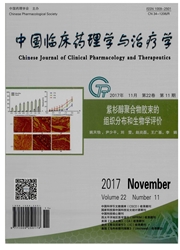

 中文摘要:
中文摘要:
γ-氨基丁酸(GABA)是中枢神经系统中介导抑制性突触传递的神经递质,通过GABAA、GABAB和GABAC三种亚型受体介导广泛的生理效应。GABAA受体亚型是GABA受体中占主导地位的亚型,可介导GABA的大部分功能,由来自8个亚基族(α,β,γ,δ,θ,ε,ρ和π)的不同亚基组成,而最典型的GABAA受体结构是由5个异质性多肽亚基(两个α、两个β和一个γ)组成的五边形寡聚体。不同亚基尤其是不同α亚基组成的亚型介导的生理和药理学效应有所不同。GABAB受体对焦虑、抑郁、癫痫以及记忆障碍等不同的神经精神性疾病的发生发展有重要的意义,可能是这些疾病防治药物的作用靶标。
 英文摘要:
英文摘要:
γ-aminobutyric acid( GABA) is an inhibitory neurotransmitter in the central nervous system(CNS), with wide physiological role via GABAA .GABAB and GABAc receptors. GABAA receptor, a dominant type of GABA receptors is comprised of different subunits coming from eight subtmit clusters. Whereas its typical molecular structure is a hetero-pentameric complex, being comprised of two α, two β and one y subunits. And different subunits especially different ~ubunit combinations give rise to various physiological and phannacological effects, which makes GABAA receptor play a great role in the development of some neuropsyehiatric diseases such as anxiety, depression, epilepsy and memory disorders etc. Thus GABAA receptor might be an effective target for preventing these neuropsyehiatrie diseases.
 同期刊论文项目
同期刊论文项目
 同项目期刊论文
同项目期刊论文
 期刊信息
期刊信息
